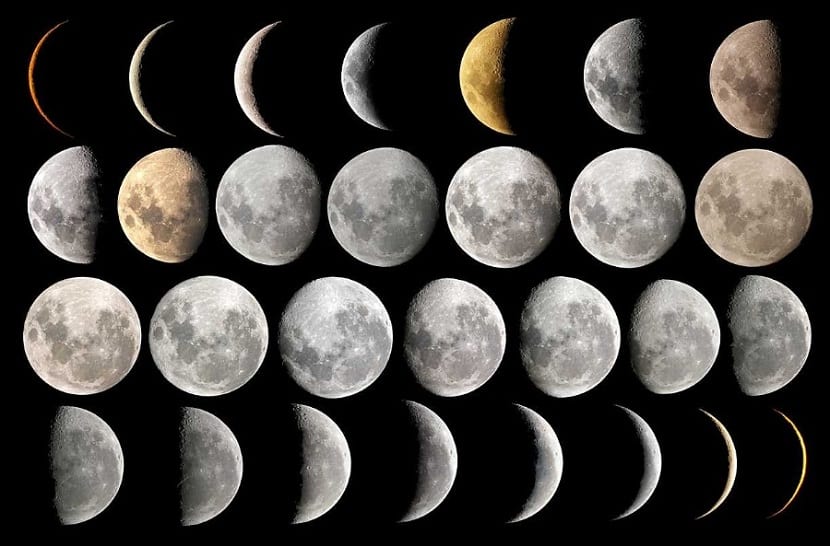
Surely we all know the different moon phases through which it passes throughout the month (28-day cycle). And it is that depending on the day of the month in which we are we can visualize our satellite in a different way. Not only in the same location throughout the days, but also depending on the hemisphere where we are. The phases of the moon are nothing more than changes in the way it lights up when viewed from Earth. The changes are cyclical and depend on the position of the same with respect to the Earth and the Sun.
Do you want to know in detail what are the phases of the moon and why do they occur? In this post you will find all the necessary information 🙂
Movement of the moon
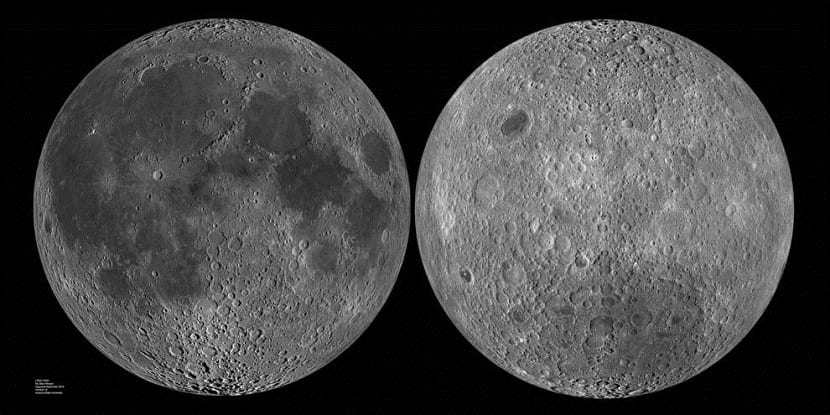
Our natural satellite rotates on itself, but it also rotates continuously around the planet. More or less It takes about 27,3 days to go around the Earth. Therefore, depending on the position in which we find it with respect to our planet and the incidence of its orientation with respect to the Sun, cyclical changes occur in the way we see it. Despite the fact that the moon was thought to have its own light, since it can be observed as one of the brightest objects in the night sky, this light is nothing more than the reflection of the sunlight.
As the orbit of the moon advances, its shape changes from the Earth observer. Sometimes you can only see a small section of it, other times it can be seen in its entirety, and other times it just isn't there. To make it clear, the moon doesn't change shape, but they are only visual effects resulting from the movement of the same and the sunlight that is reflected on its surface. These are angles from which observers on Earth observe the illuminated part of your area.
It may be that in Spain we have a full moon, while for the United States it is waxing or waning. It all depends on where on Earth we look at the moon from.
Lunar cycle
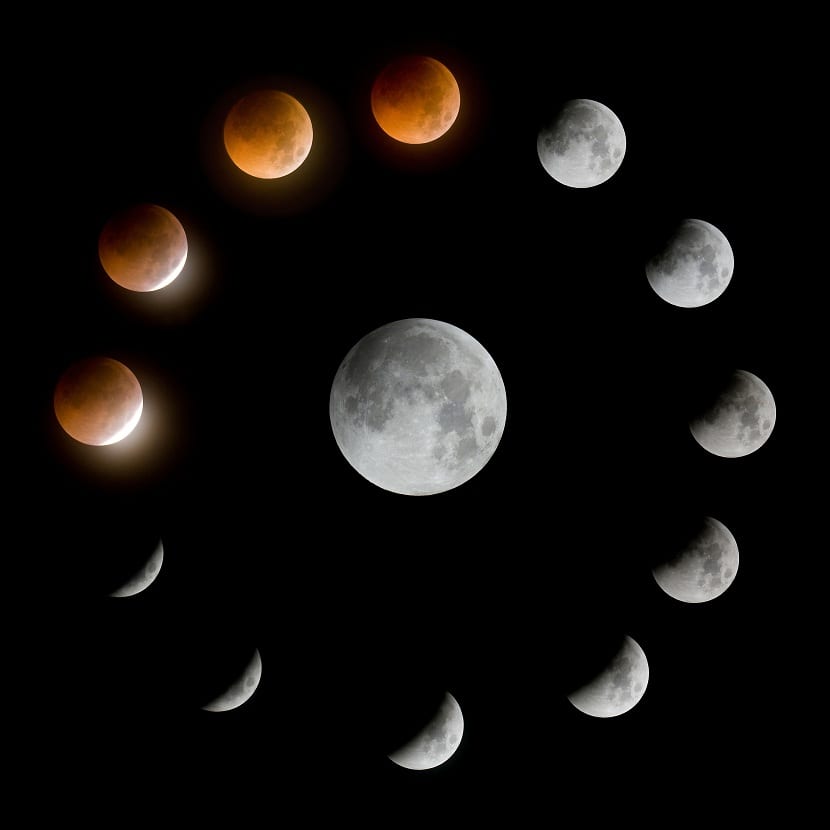
The satellite has a tidal link with our planet. This means that the speed of its rotation is coordinated with the orbital period. Because of this, although the moon is also continuously rotating on its own axis as it circles the Earth, we always see the same face of the moon. This process is known as synchronized rotation. And it is that, no matter where we look at the moon, we will always see the same face.
The lunar cycle lasts about 29,5 days among which all phases can be observed. At the end of the last phase, the cycle is restarted. This always happens and never stops. The most popular phases of the moon are 4: full moon, new moon, last quarter and first quarter. Although they are the best known, there are other intermediates that are also important and interesting to know.
The percentage of illumination of the moon in the sky varies as the shapes follow one another. It starts with 0% illumination when the moon is new. That is, we cannot observe anything in the sky. It is as if the moon has disappeared from our sky. As the different phases occur, the percentage of illumination increases until it reaches 100% on the full moon.
Each phase of the moon lasts approximately 7,4 days. This means that each week of the month we will have the moon in approximately one shape. Since the orbit of the moon is elliptical, this time and the shapes vary. In general, all the phases of the moon that have more light last 14,77 days and the same for those darker phases.
Different phases of the moon

Before beginning to describe the phases of the moon, it is important to emphasize that the phases that we are going to name are only one way of perceiving the moon from the position in which we are on Earth. At the same time, Two observers at different positions on Earth can see the moon differently. Nothing is further from reality, an observer in the northern hemisphere can see the moon with a movement from right to left and in the southern hemisphere it is from left to right.
Having cleared this, we begin to describe the different phases of the moon.
New Moon
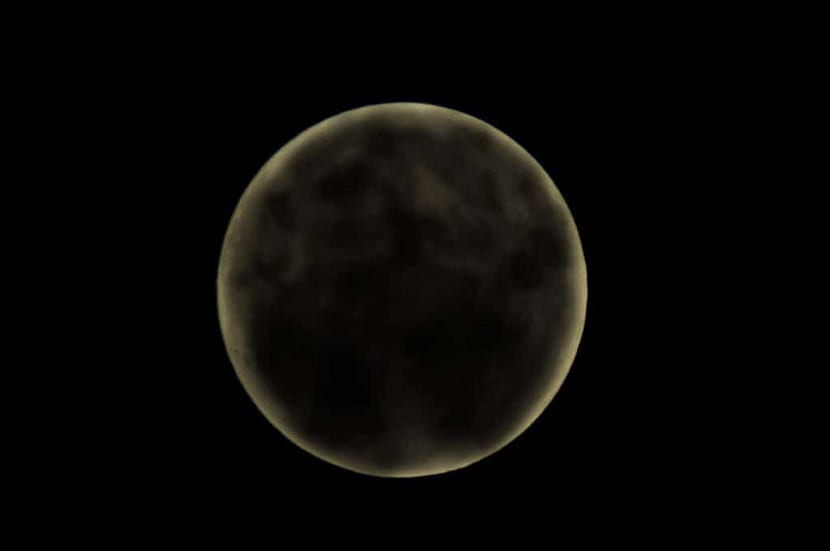
It is also known as the new moon. At this stage, the night sky is very dark and it is quite difficult to find the moon in the dark. At this time, the far side of the moon that we cannot see is illuminated by the sun. However, this face is not visible from Earth because of the synchronized rotation mentioned above.
Throughout the phases that the moon passes through, from new to full, the satellite travels 180 degrees of its orbit. During this phase it runs between 0 and 45 degrees. We can only see between 0 and 2% of the moon when it is new.
Crescent moon
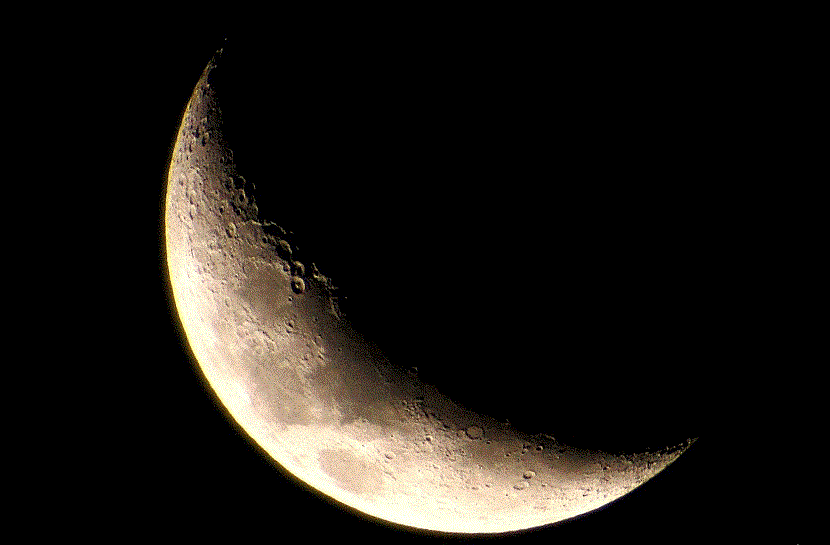
It is the phase in which we can find the moon looming after 3 or 4 days after the new moon. Depending on where we are on Earth we will see it from one side of the sky or the other. If we are in the northern hemisphere, we will see it from the right side and if we are in the southern hemisphere we will find it on the left side.
In this phase of the moon it can be observed after sunset. It thus travels between 45 and 90 degrees of its orbit during this phase. The visible percentage of the moon in this tour is 3 to 34%.
First quarter

It is when half of the lunar disk becomes illuminated. It can be seen from noon to midnight. In this phase it travels between 90 and 135 degrees of its orbit and we can see it illuminated between 35 and 65%.
Waxing gibbous moon

The illuminated area is more than half. It sets before sunrise and reaches its highest peak in the sky at dusk. The part of the visible moon is between 66 and 96%.
full moon
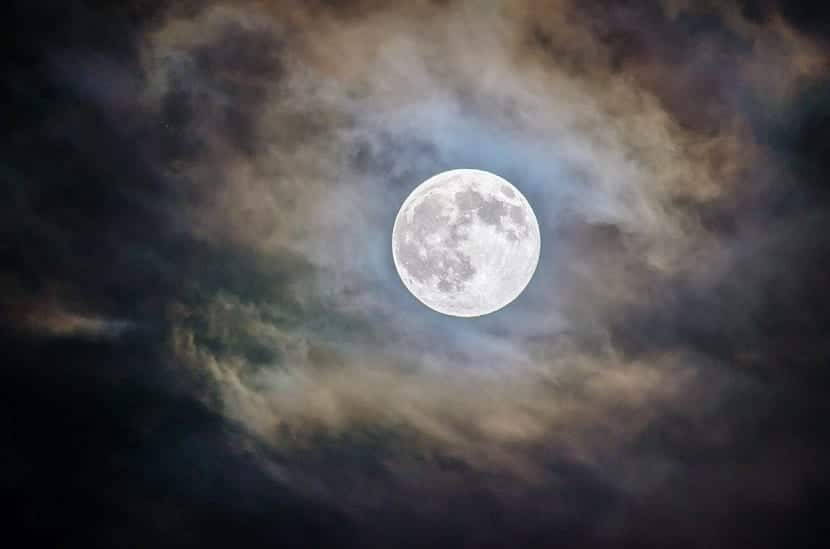
It is also known as the full moon. We are in the phase in which the moon is fully visible. This occurs because the Sun and the Moon are aligned almost straight with the Earth at its center.
In this phase it is in a completely opposite position to that of the new moon at 180 degrees. It can be seen between 97 and 100% of the moon.
After the full moon, the following corresponding phases are:
- Waning gibbous moon
- Last quarter
- waning moon
All these phases have the same characteristics as the crescents, but the curve is observed on the opposite side (depending on the hemisphere where we are). The progression of the moon is downward until it reaches the new moon again and the cycle is restarted.
I hope that with this information the phases of the moon have become clear.